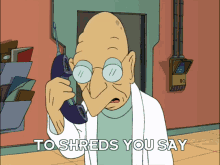Hi, arborist here! Fallen leaves are generally pretty low in nutrients–trees send back as much as they can into the tree before dropping them. So, you probably don’t need to fertilize shade trees whether they stay or go. The bigger issue is that removing a huge input of carbon into the soil leaves you with low organic matter and lowered ability to retain what nutrients do exist. This poor soil quality will stress your trees, but adding fertilizer doesn’t address the root issue.
Fruit trees generally do need to be fertilized since fruits are much higher in nutrients and are not generally returned to the soil unless you’re doing some kind of poo composting scheme.
Point of clarification: organic matter doesn’t really retain the nutrients but acts as the slowly mineralized pool of nutrients associated with soil quality.
The way you describe it is similar to how a sponge works rather than a storehouse.
You are right, though, in that you don’t need to fertilize trees for the most part. Forest soils are hilariously low in nutrients: TOC is around 1% and N is next to non existent (N is highly labile), while P and K are moderate to high. As a result, forests veg is most competitive in nutrient poor conditions. If you fertilize a disturbed area, you get a pile of weeds and grass that can set back your revegetation timeline because your desirable woody spp now have to out-compete them. This process still happens if you don’t fertilize, but it’s generally less pronounced and allows some woody plants to gain the foothold they need
Well, based on our prior conversations I suspect you know far more about soil science than I do, I only know the basics necessary for arboriculture.
So what you wrote is of course accurate but I understand both to be at play here—leaves break down into humus that chelates minerals and supports fungi that can hold onto nutrients and keep them from leaching away in rain. Leaves also provide a physical barrier that protects soil from physical erosion. But let me know if I got anything wrong.
My overall point was mainly just that you don’t need to replace leaves with fertilizer if you are removing them, but it’s still a good idea to leave them in place for other reasons.
First and foremost, I’m not trying to nitpick - I just really like dirt. It’s embarrassing kinda.
Secondly, being a good soil scientist doesn’t necessarily mean you have a good understanding of plant requirements. Plants are their own can of worms, and their needs vary by species.
Third, the soil carbon and fertility cycle is a terrifying place. There are so many facets of organic matter in the soil it will make your head spin. In some cases OM can be physically protected by other, more recalcitrant OM.
Building up OM can yield more humus and more cation exchange capacity, which does play a role in fertility for secondary and micronutrients.
I really don’t know much about fungi holding onto minerals, but in general, the organic nutrients (like P tied up in ATP) only get released when organisms die, so in that capacity fungi and other biota play a buffering role
I read a while ago that trees attempt to reduce competition by dropping their leaves to prevent saplings growing too near. Was that all bunk?
I’m not directly aware of any trees that do that, but it honestly wouldn’t surprise me if that was true for at least one species.
Most trees that drop seeds have methods of getting them away from the parent tree. Maple trees have little helicopter twirlies, oak trees have animals carry them off, some trees grow new ones from their roots called suckers.
I’ll try to look it up later because now I’m curious. I’ll update here if I find anything interesting about trees dropping leaves to prevent new ones growing too close.
I don’t think my arborist textbook said anything about that specifically, but I’ll double check there first.
Thanks!
Np! I couldn’t find any evidence that any species of tree use their leaves to prevent new ones from growing too close.
The lack of light, water, and nutrients would kill and new saplings all on its own.
That might be an old hypothesis that later got disproven, but most people don’t keep up on forestry sciences so that’s understandable!
appreciate it.
Not bunk, but not an evolutionary strategy, I imagine. Leaves are dropped because they are too hard to maintain, rather than the benefit the trees get from mulching out competition.
Depends on the type of tree – pine trees do benefit from the acidification of soil via their dropped needles - it reduces competition.
Yes, but again, it don’t think it’s evolutionary strategy, rather than the content of the needles is what is needed, and the acidification is just a knock on effect. Pines in particular are disturbance specialists - they take off after fire, and drop relatively few needles during establishment when competition from grasses and other plants is at the highest. When they get larger they don’t have to worry (,as it were) because you can choke out anything below you just by being big
It is very interesting though to walk through a pine stand after walking through a stand of mixed hardwoods. There is almost no undergrowth. It’s a very different character.
Are boreal pines disturbance specialists too?
Some trees do a bit, I guess? Like, beech trees will release some chemicals to inhibit other plant growth, and iirc their leaves do that as they decompose, as well as the root system itself. But depends on the plant and mostly bunk I believe.
Thanks
Oh that’s so cool, thankyou for sharing!
I don’t have my books handy, but while they take a lot back this varies by species and the fallen leaves can have a lot of N and P in some cases.
Though I’ve always seen them shredded and used for making compost anyway rather than leaving them on the ground. Too easy to get rot that way. And you really want to spread them around the rest of the garden if you’ve planted trees that do drop N in the leaves
I’m sure it does vary—my impression is that N fixing trees in particular are going to have higher N levels in the leaves they drop but I’m sure it varies by species as well.
But from my experience, most urban shade trees don’t really need to be fertilized unless they are exhibiting symptoms of nutrient deficiency—and even then, this is often a symptom of poor soil and root health overall more than a specific lack of a nutrient. Most urban soils tend to be fairly high in nutrients due to air pollutants, excess fertilizers, pet feces, etc. I’m sure this can also vary by soil type and climate, but it’s true in most areas I’m familiar with.
No I agree, it’s mostly useful to fertilize the plants elsewhere in the garden.
But it seems everyone here is thinking of lawns and I realise late my concept of a garden is utterly alien to what most people actually do. No lawns for me!
Tricky balance when you need to manage mold/fungal growth and too much cover killing grass. But yeah, we are “wasting” a lot of nutrients by trashing leaves like we do.
That’s why I went for a twin blade mower. It turns everything into powder.
Does work for my depression as well?
There are other powders for that
I tried addressing that with my twin blade blower. Don’t recommend.
“I told you not to try it feet first!”
Jesus Christ what was I thinking! That would have hurt hell! Turns around

Not sure why it took me year to realize that this is the best solution. Its much easier than raking my huge backyard and it’s just less wasteful at the end.
But yeah, we are “wasting” a lot of nutrients by trashing leaves like we do.
I was raised to compost those fuckers, more people should be doing that
when you need to manage mold/fungal growth and too much cover killing grass
“Need to” or " need to " …
The grass will be fine.
Too many leaves will definitely kill the grass.
Whether that’s a bad thing is a separate question.
#killyourlawn
I need something to prevent the soil from eroding when it rains.
Well plants and leaves can definitely help with this. If you’re in the US, your state DNR may have resources on which plants are most effective for this in your area and site conditions.
Also, if you are getting a lot of runoff from upslope, you might need to investigate whether changes are needed at the source of this runoff rather than in the immediate area of erosion. If you can slow that upslope water and allow it to absorb in the soil up there, that can help a lot even without changing anything lower down.
Well, my backyard is a hill.
You could always use native grasses and plants. There’s nothing inherently wrong with grass, but it’s important to have grasses that make sense within your ecological context. Using a bunch of non-native grasses may help for soil retention on your hill, but native grasses would do the same thing – arguably better since you can use ones with root systems that grow deeper into the soil and they’re more drought tolerant – and they’d be multipurpose (food, cover, nest materials, etc.) for native animal species. They’re often prettier and more colorful during the various seasons and take fewer resources to maintain once established.
Hell you could kill the invasive grasses & replace them with native plants.
Unfortunately I’ve been having an issue with losing grass and dealing with erosion.
Plant a deep root plant, turff grass that’s kept short has short roots.
There are things that kill grass. And not enough sunlight is one of them.
Sadly, Hank is exactly the type of person to do that. The details he shares about his lawn care show that he’s all about artificially tweaking variables and removing uncontrolled factors. This should be Bobby lecturing Hank about his industrialized and unsustainable landscaping practices.
Yeeahh!












